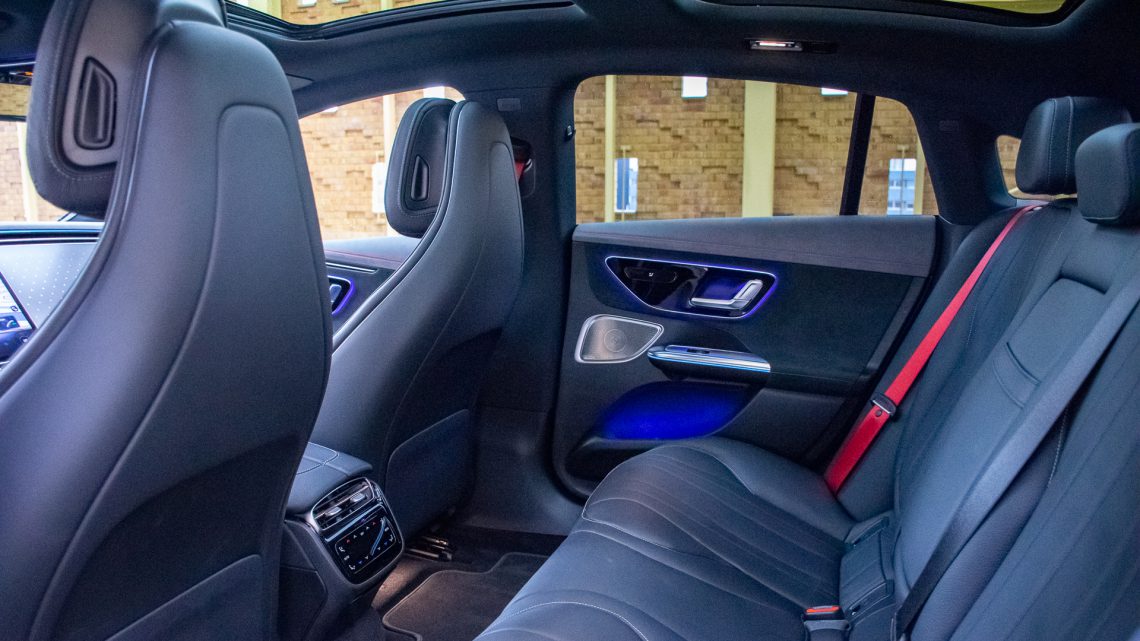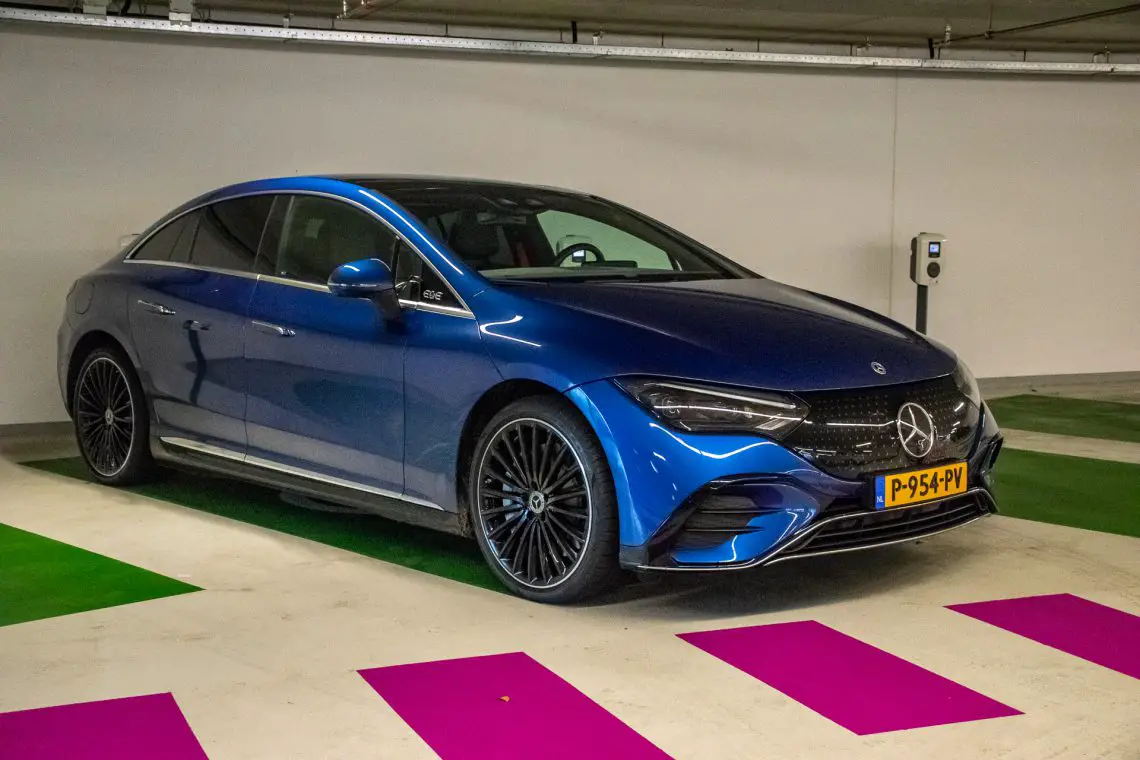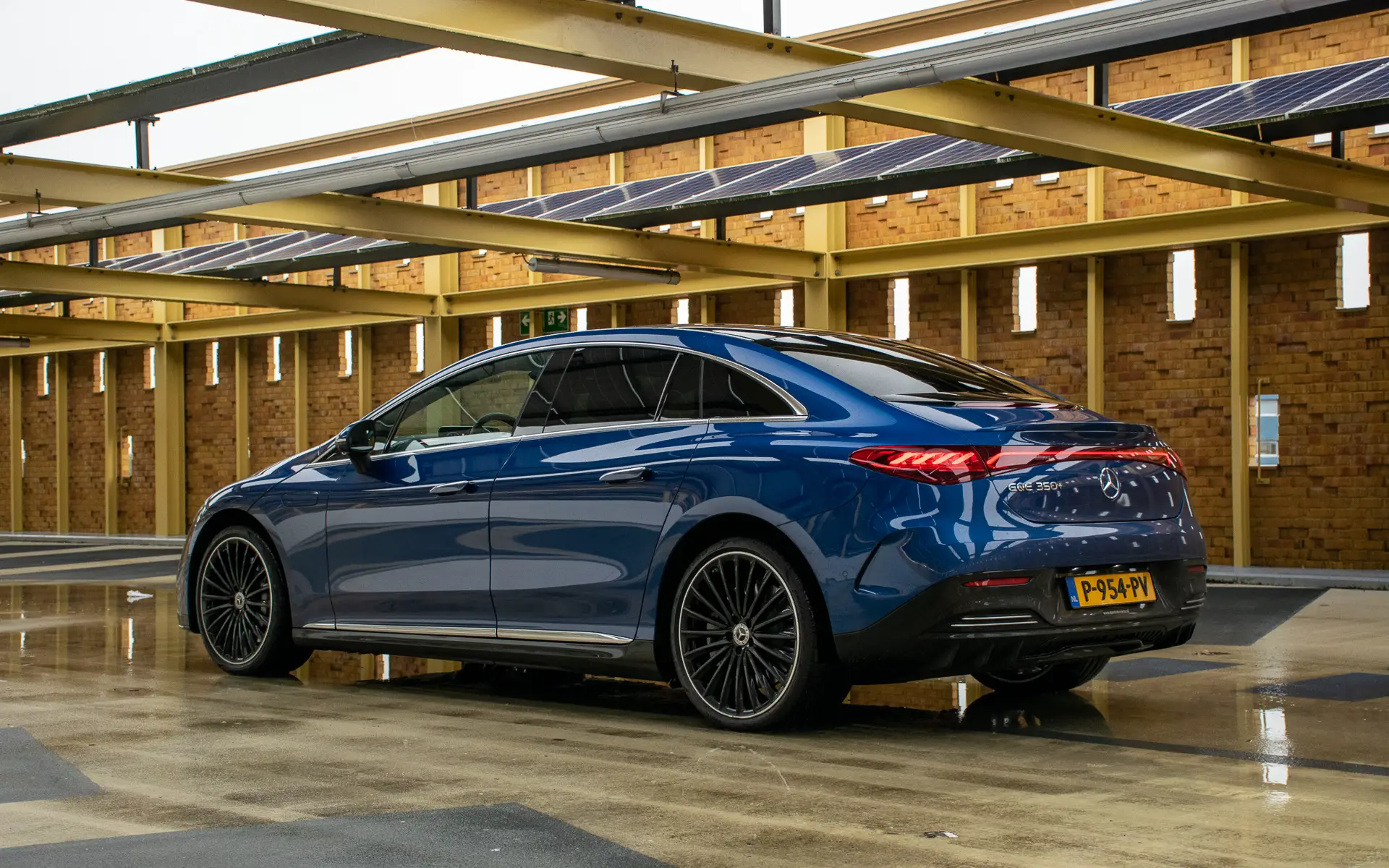Review – Mercedes-Benz EQE (2023) – Bye bye range anxiety!
Mercedes-Benz currently leads the German premium brigade in terms of the number of electric models in its portfolio. Meanwhile, Das Haus has an electric EQ model in every segment, with the Mercedes-Benz EQE being the electric equivalent of the E-Class. E-Class owners typically drive long distances, so then you have to come up with a strong alternative to lure those customers to an electric car.
Although driving long distances with an electric car has become easier in recent years, the subject of range remains a hot topic. It does not help that the stated range and the range in practice are often quite a distance apart. Therefore, we thought it would be interesting to borrow the EQE from Mercedes-Benz for a week and drive it as many long stretches as possible.
Mercedes-Benz EQE (2023) – Ultimate electric mile-eater? – AutoRAI TV
Specifications Mercedes-Benz EQE 350+
For us, Mercedes-Benz prepared the EQE 350+ Long Range. The type designation kind of gives it away: this is the version with the greatest range. In fact, Mercedes-Benz gives a WLTP figure of a whopping 662 kilometers! In practice, by the way, that turns out to be a long shot, but more on that later. First the dry numbers: the EQE 350+ has a 292-hp electric motor on the rear axle that gets its power from a 100 kWh battery. The car weighs just under 2,300 kilograms, sprints to 100 mph in 6.4 seconds and has a top speed of 210 mph. Fast charging can be done with a charging rate of up to 170 kW, which can charge the battery from 20% to 80% in about half an hour. At a regular charging station, the EQE draws power at a charging rate of up to 11 kW.

Washed too hot
Those numbers are certainly not wrong, but how does the EQE affect sentiment? Let’s start with looks. We won’t beat around the bush: the car’s drop shape has to be your thing. Some people we talked to during the testing period loved it, others thought it was nothing. So mostly judge for yourself. Objectively, the choice of the droplet shape is not very unwise, as the EQE’s good aerodynamic properties contribute to a greater range.

We already know the EQE’s dashboard from the EQS. In fact, the interior design – like that of the exterior – was copied almost one-to-one from its bigger brother. In front of the driver’s nose sits a 12.3-inch digital instrument cluster; in the center, a 12.8-inch OLED touchscreen dominates the view. Those screens run the MBUX infotainment system, which works fine and fast. Unfortunately, you cannot order the dash-filling MBUX Hyperscreen on the EQE 350+. That option remains reserved for the more expensive versions.
Mercedes-Benz EQE 350+ as a cab?
When you take a seat in the Mercedes-Benz EQE 350+, you immediately notice how comfortable the front seats are. You have plenty of adjustment options and the seat is nice and soft. But even the passengers in the back have no reason to complain. Legroom, in particular, is in good shape. The sloping roofline does compromise headroom a bit more quickly, but that applies mainly to people taller than 6 feet. That space in the back means the EQE could very well be used as a… cab.
As for the luggage space, it is adequate at 430 liters, but not extremely spacious. On top of that, the EQE is a sedan, which means the rear window is fixed and thus does not hinge up with it for greater access to the cargo area. That is immediately a big difference from the EQS, because on that car the rear window does hinge up with it.

On to Brussels
Okay, time to drive the Mercedes-Benz EQE 350+. We have an appointment in Brussels and are driving there from Zwolle. The navigation indicates a 290-kilometer drive. A few years back, you would be sweating sinew in an electric car at such a distance, but not in the EQE. When we remove the car from the charging station in the morning with a full battery, the on-board computer indicates a range of just over 450 kilometers. The number is based on power consumption earlier in the test period. Yes, it’s certainly less than the stated 662 kilometers, but considering that it’s less than 5 degrees outside and we’re driving with all comfort features on, it’s still a tidy score.
Driving with all the comfort features on, by the way, we do it deliberately to see what remains of the stated range if you don’t think very consciously about the car’s power consumption. In the case of the EQE, that 450 kilometers turns out to be pretty accurate. We arrived – thanks in part to the excellent driving assistance systems – completely relaxed with about 150 kilometers of range left. So getting back to Brussels just wouldn’t have worked out, but during the appointment there was more than enough time to recharge the car to make the return trip without any problems.

The EV for long distances?
If you start driving an electric car in the winter, you still run into a big difference between its stated range and its real-world range. In summer, however, the EQE should allow you to get a lot closer to those specified 662 kilometers, making “range anxiety” already a thing of the past.
Our trip to Brussels demonstrates that the long-distance rider can get along just fine with the EQE even in winter. On even longer stretches, the quick charger provides relief, then the battery is back to full in about half an hour. Most people need a break after more than 400 kilometers of driving anyway, so you might wonder how bad it is that you then need to recharge the car for a while.

What about the competition?
Then, of course, the key question is: wouldn’t it be better to just opt for a Tesla Model S with its Superchargers if you drive a lot of long distances? Yes, you certainly can, but then you have to compromise relative to the EQE when it comes to build quality. Moreover, with an EQE, you can also use Superchargers these days.
Mercedes-Benz shows with the EQE that it is ready for the electric age. The competition is not sitting still, however, with BMW and Audi working on electric versions of the 5 Series and A6 at the time of writing. So to be continued…

